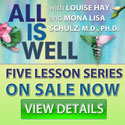ARE THESE POPULAR PABULUMS REALLY THE PANACEAS FOR WHAT AILS YOU? HOLISTIC HEALTH COUNSELOR KELLY SCOTTI DIPS INTO THE POWER AND THE PROPAGANDA BEHIND NATURE'S SAVING GRACES.
Originally published in the October 2006 edition of thefamilygroove.com
Superfoods have been promoted in the media for the last few years as the answer to everything. Want age-defying beauty, optimal health, clear skin, higher brain functioning? How about preventing cancer? Superfoods are touted as the miracle cure-all for everything bad that can happen to you. But riddle this: what if there really are no superfoods? What if there are only foods that, depending on how much you eat of them, the speed and the manner in which you eat them, how you prepare them, what they are combined with, and whether or not they are organic, influence their classification as good, bad or neutral?
Yes, it's true.
All of the factors I just listed affect the effect food has on your body and your mind.Ultimately, if your diet is varied and full of whole foods, and you take time to enjoy the process of eating, then foods will affect you positively, prevent disease by boosting your immunity, aid in digestion and more. It sounds to easy to be true, right? But, in fact, most whole foods when eaten in combination with one another are nutritional powerhouses, a.k.a. superfoods.
Okay, so for those of you that still have to have your superfoods shopping list, let the rescue begin with the basics:A food has to be organic to be super. Yes, organic costs more, but buying organic ensures your food will have a higher nutrient content, making these “superfoods” even better for you. Also, organic is safer for your children because they don't allow the use of pesticides or genetic modification in organic foods. Remember that in order for foods to be super for our kids, they have to contribute to proper brain function, provide our children with the macro- and micronutrients they need, give good sustained energy, not cause inappropriate weight gain, and be appetizing to our picky little girls and guys. Portability and easy access are a plus. That’s a lot of pressure for these little foods. Let’s see if our top 20 list (in no particular order) rises to the challenge:
Grapes
Portable and powerful, these little balls of joy provide your child with polyphenols (antioxidants), vitamin C, and natural sugars. They give an instant energy boost.
Berries
Low in sugar, high in phytochemicals, antioxidants, fiber, calcium, magnesium and zinc, these sweet treats are easy to eat and easy to carry. Pick one or try them all: blueberries, strawberries, cranberries, blackberries, raspberries and more.
Oranges
Rich in beta carotene, vitamin C, vitamins B1 and 6, potassium, folic acid, calcium, and iron, oranges are colorful, sweet smelling and a real treat for our little ones—and don’t forget, very accessible and portable.
Bananas
A rich source of Vitamins B and C, potassium, magnesium and iodine. They are easily digested and a high energy source—and again, very portable.
Apples
Every colorful apple provides five grams of fiber and lots of antioxidants, including flavonoids and other polyphenols. Apples, however, are one of the most pesticide-sprayed crops, and most non-organic apples are waxed to make sure they are not damaged in shipping ( and who wants to eat that?), so be sure to choose organic.
Avocados
Avocados are fruits that provide a terrific source of monounsaturated fat, an essential part of your child’s proper growth and development. In fact, over 60 per cent of a child's brain is comprised of fat. Good fat should make up a third of your toddler’s daily calories to support proper brain functioning.
Broccoli
You might need to dress it up a little (did anyone say melted cheese?), but broccoli is loaded with disease fighting chemicals and vitamin C. Chop it up and serve it incognito in a main dish—your child will never know it's there.
Mushrooms
A great source of phosphorus, magnesium, potassium and selenium, mushrooms are also easy to put into varied dishes without the risk of discovery.
Tomatoes
Tomatoes are high in lycopene, a potent carotenoid antioxidant. Cherry or grape tomatoes are easy for an on-the-go snack. The bigger tomatoes can be chopped into salads, wraps, salsa, and more for lots of tasty options.
Carrots
Carrots contain high levels of beta carotene, are fun to eat and easy to carry.
Nuts or natural nut butters
Essential fats are the key here. Be sure to choose peanut butter and other nut butters that are natural to avoid high fructose corn syrup and other yucky ingredients. And make sure you give only chopped nuts to kids under five to avoid choking.
Beans
Filled with fiber, protein and iron, beans are a nutritious addition to a child's diet, and very easy to put in soups, grind into spreads (hummus anyone?), salads and more.
Cage Free, Organic Eggs
Eggs are a complete protein, and contain lutein and zeaxanthin, antioxidants that support eye health. They are low in sodium, and great for your little one’s growing body. You can also buy omega-3 eggs, which offer your child essential fatty acids for brain development support.
Yogurt
One cup of yogurt provides 13 grams of protein and almost 500mg of calcium, making it one of the best sources of protein and calcium for your child. Yogurt also contains probiotics which help promote immune system functioning and healthy digestion. Throw in some berries for a taste treat. Make sure to choose varieties with no added sugars or artificial sweeteners.
Sweet potatoes
These root veggies are loaded with beta carotene, vitamin E, vitamin B6, potassium and iron. Mash’em up and serve’em hot. They make great food fight material as well, and spice up the color of any wall—so beware.
Mangos
This tropical fruit provides more than a full day’s serving of beta-carotene, as well as fiber, potassium, and vitamin C. They are so good and juicy—and portable, but be sure to bring a napkin or wipe.
Quinoa
Quinoa (pronounced KEEN-wah) looks and tastes like a grain, but it's a seed that contains copious amounts of iron, potassium, vitamin B, fiber and protein. A ½ cup actually provides all the protein your child needs in a day—that’s some seed. You can prepare it as a rice-type dish or like porridge. It’s good any time of the day. My son and I like it with a little balsamic vinegar as a side dish, or with some pure maple syrup for breakfast.
Salmon
Salmon contains heart-healthy omega-3 polyunsaturated fat, tastes good, and is easy to prepare. Choose wild Alaskan salmon to decrease risk of mercury contamination.
Whole grain bread
No Wonder bread on the list here. White bread and refined whole wheat can lead to blood sugar havoc, weight gain and fluctuations in energy. Look for breads made with 100% whole wheat or whole grain in order to keep your child’s energy level up and his/her glucose level regulated. Whole grains are rich in complex carbohydrates and add beneficial phytonutrients, fiber, vitamins and minerals to your child’s diet.
Green leafy vegetables
Greens, such as spinach, kale, bok choy, Swiss chard and romaine lettuce, contain beta-carotene, vitamin B, calcium, lutein and zeaxanthin that work together to support overall health. Getting your child to eat them might be a challenge if you toddler is like mine and avoids anything green. However, a variety of quality green drinks and powders have sprouted up in the last five years, and my little one loves them (as long as I call them juice). Take a look below for more information on some of the green drinks you can find in your supermarket or health food store, and my favorite home recipes.
Dark Chocolate
After you fill your child up with all the great foods listed above, its time for you to indulge in my number one super food: pure, dark organic chocolate. Loaded with magnesium, antioxidants and chemicals that mimic the love response in our bodies, a little piece of dark chocolate is a little piece of heaven. When it’s really dark, you only need a little to fill up that sweet spot.
At the end of the day, just know that the more good foods you can add into your child’s diet, the more likely he or she will make good food choices in the future. Avoid those sugary, processed, junk food traps. For now, load them up on the goodies above, as part of a varied, colorful, organic diet and watch them thrive.
Superfoods Key
Phytonutrients/phytochemicals
These are plant-derived compounds that are not essential to your health, but are believed to improve your health. Phytochemicals, called polyphenol antioxidants, for example, give fruits and vegetables their vibrant hues of green, orange, red and purple.
Antioxidants
These sustenances help neutralize harmful food digestion byproducts called free radicals that can lead to cancer, allergies, heart disease and other age-related diseases.
Flavonoids
These are the best-known antioxidants. Think citrus fruits, berries, onions and tea. Flavonols, isoflavones, and anthocyanidins are subgroups of the flavonoids. Over 5000 naturally occurring flavonoids have been characterized from various plants.
Carotenoids
These are the pigments that protect dark green, yellow, orange and red fruits and vegetables from sun damage, and they work as antioxidants in humans. There are over 600 of them, but the most well known include beta-carotene (vitamin A), lycopene, and lutein.
Vitamins
Nutrients considered essential to health.
Minerals
In general, these are trace elements, salts or ions such as copper and iron. These minerals are essential to human metabolism.
For superfood recipes and shopping lists, check out these super sites: www.wildoats.com/u/recipe200/ and www.wildoats.com/u/health100454/ .
For those of you that prefer books to the Internet, check out Superfoods for Babies and Children by Annabel Karmel or The Organic Baby and Toddler Cookbook by Lizzie Vann.
The Scoop on Green Drinks
Some of my favorite combinations include:
- Bok choy, green apples and strawberries
- Raspberries, blueberries and collard greens
- Romaine, cucumber and mango
I change up the amounts of each of the ingredients every time. For the most part, I include four or five leaves of the greens with about a cup or two of fruit and about 16 ounces of pure water. That makes about 32 ounces of juice. I have a very powerful blender called a Vita-Mix (http://www.vitamix.com/) that allows me to make the combinations above without having to throw out of any of the good pulpy stuff (like some juicers do).
If you don’t have time or the equipment to make your own green drinks, you can find two of my favorite at the grocery store:
Naked Juice Green MachineOdwalla Superfood™
Micronutrient Fruit Juice Drink
Not only do they taste good, but they are good for you, and a much better choice than regular sugary reconstituted fruit juices available. If buying brands other than the two listed above, make sure you read the label to confirm they contain real juice and not just sugar. Also try to buy varieties that are labeled organic and GMO free.
Another option is green drink powders. For a list of some of the powders available, their ingredients, and directions for use, visit http://www.energiseforlife.com/green_drinks.php.
Kelly Scotti, HHC, is the Founder and Director of Flying Dragon Wellness, www.flyingdragonwellness.com,a nutrition and wellness counseling practice in Bucks County, Pa. She's Board Certified by the American Association of Drugless Practitioners, and obtained her training from the Institute for Integrative Nutrition in NYC. She and her husband also run an online baby boutique for boys, www.ohboybabyboutique.com. Kelly sees clients at her office location in Pipersville, PA, as well as conducting counseling sessions over the phone. For more information, or to schedule a consultation, please email Kelly at flyingdragonwellness@yahoo.com.





No comments:
Post a Comment